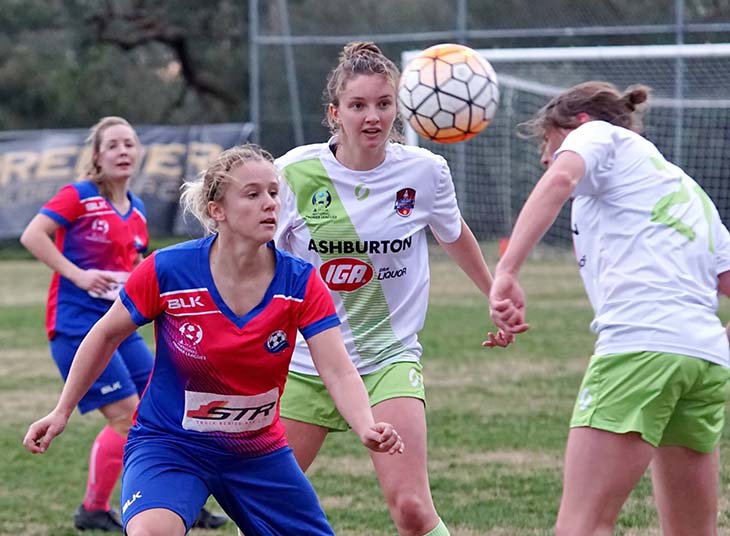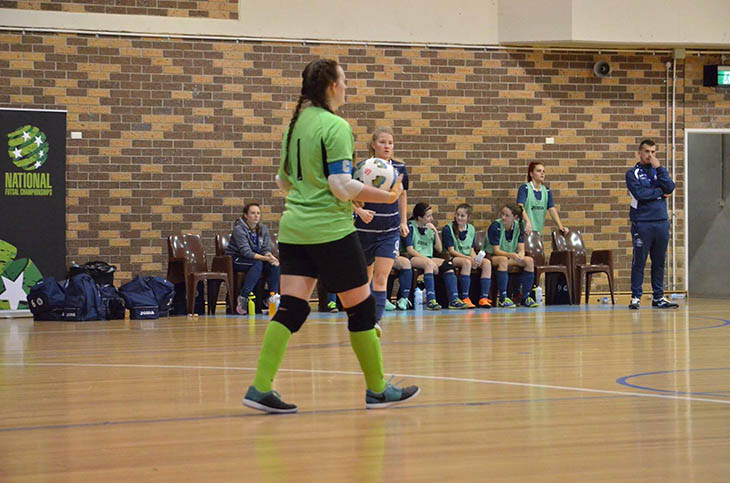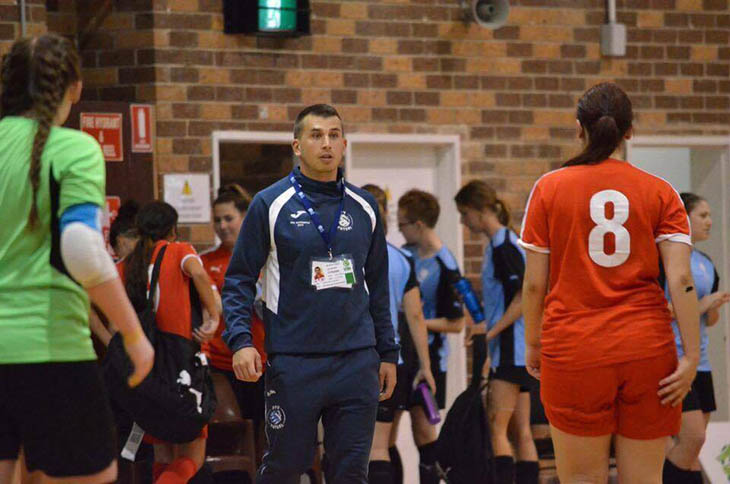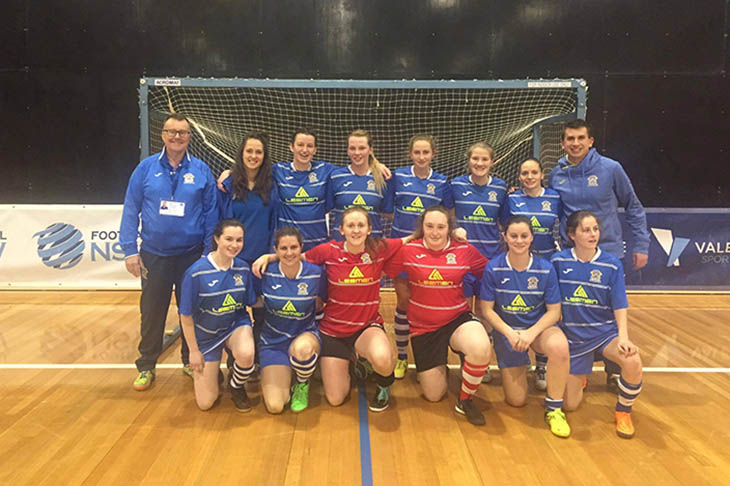Feature Image: NurPhoto/Getty
In the last fortnight, we’ve seen the Matildas compete at the pinnacle of international sport at the Rio Olympics, while Socceroo Tim Cahill made his homecoming to become the highest paid footballer in Australia.
While few sections of the footballing public have been quick to criticise the Matildas following their disappointing Quarter-Final exit to Brazil, or Cahill’s ‘cash grab’ move to Melbourne City, the relationship between the fortune, fame and ultimately scrutiny these figures enjoy is as mere by-product of playing the sport they love. It was a by-product of hitting new benchmarks in their footballing career; Europe, Socceroos, Premier League, World Cup qualification and then international titles and records. Women’s football has approached its turning point, where the prestige of playing for the Matildas and competing in World Cups and Olympic campaigns have turned the heads a whole generation of aspiring female footballers knowing that they can one day aim to play at the highest level.
However there is one more component of football in Australia that is often overlooked, perhaps the younger sibling of football to some, or the condensed, action-packed social version to others. No matter how you dress it, futsal is a sport that doesn’t share the same prestige as association football and as such, there are very few opportunities available in Victoria to play at an elite level.
The league is administered by Football NSW, which means five of the total eight top-flight F-League teams are based in New South Wales or the ACT, while just one – the Vic Vipers – exists in Victoria. The national team – the Futsalroos – is soon to embark on their World Cup campaign after qualifying with a fifth place finish in the 2016 AFC Championship. This is purely an amateur entity, with national team selection done for the love of the sport for its players and coaches, but regardless it’s still holds firm as an avenue to representing your country at an elite level.
“I had to quit my job to come here and my private, professional life is based around futsal which is a non-paying hobby – a very satisfying – but non-paying hobby but I wouldn’t swap it for anything,” Futsalroos coach Rob Varela told the FFA at the time of qualification.
While the men have the Futsalroos to aim for, at this current point in time there’s no equivalent national team for women. Their ‘national team’ is currently headed by the Federation of Australian Futsal (formerly known as the Australian Futsal Association), who hold no working relationship with the countries governing body and therefore FIFA. Instead, they hold association with the Asociación Mundial de Futsal (or World Futsal Association) and have been responsible for sending Australian representatives to the AMF Women’s Futsal World Cup, which is not to be confused with it’s FIFA affiliated equivalent. The FAF are just one organisation competing for the same share of pie, with Futsal Oz’s Series Futsal also competing alongside the Women’s F-League as the ‘premier futsal competition’ in the country.
The lack of cohesion in the Australian futsal scene stems from the FFA’s failure to properly invest in the sport, men or womens. The profitability of the spawned breakaway league’s proves there is a market for it that is not just restricted to your ‘Tuesday night social league’ types. It would be remiss of us not to understand that FFA profitability comes from protecting its highly-prized assets in the form of the A-League and Socceroos, and of course that involves allocating sufficient funds through the bigger channels within its resource portfolio. For these same reasons, the W-League and Matildas are often also left behind on the funding front. It’s insufficient governance at an elite-level has opened up the market for those with an avid belief that they can do things better. As such, by no means should we undermine the role of these independent leagues as they stand for the things that our sport’s governing body cannot be at this point in time. They want to see an active improvement in the state of the sport in Australia, and have built their base of support around those that agree with them.
At the present, qualification to the ASEAN Club Championship is the highest honour that women can compete for within the realms of FFA sanctioned competition, with qualification earned by winning a finals series in an eight-team women’s F-League championship, which again like the men’s competition is run by Football NSW with 50% of the teams coming from ACT/NSW. Victoria have two representatives in the Vipers as well as the Bayside Pirates.
The league is home to plenty of current and former top-flight Victorian players including current Alamein FC utility Sienna Fogarty and Calder United keeper Bethany Mason-Jones, the latter being understanding of the adversities futsal must overcome to become a serious player in the Australian sporting scene.


“I hear girls talking about how much they love futsal but obviously the outdoor game has more prestige about it,” Mason-Jones said.
“It’s hard to compete with that but they’re two different sports and I think if we can get more people behind it, it could really take off in Australia. I want to help build the sport as does my coach Sam Mlynarz. I don’t really know how to do that, but in the future we’d really like to see a women’s national team.
“With outdoor, you’ve got girls looking up to the Matildas to be like them, but it’s a bit harder with futsal where you’re playing for the passion of the game. Goal setting is really important and if you don’t have things like a women’s national team then you’re just playing for a passion and can’t set your goals for where you’d want to be.”
Mason-Jones recently travelled to New Zealand as a representative of a Victorian Select to take on their women’s champions Central Football Manawatu, which provided the players with a rare opportunity to ply their trade in a more professional capacity. However, the international trip was self funded by the players themselves, and unlike interstate travel in the F-League, costs were not subsidised by sponsors. It just adds a further dot point that much of what is done currently in women’s football is done for the love of the game with little progression up the chain.
“I’ve really come to love futsal in the last few years but it’s just we don’t have that consistent playing. We’ve got Futsal Oz which his more of a social league, then FFA Nationals which is once a year. We played the New Zealand national champions of their league and we played a three match series. Unfortunately we went down in [all three games] but it was a good experience for our team, it was really professional and I’m grateful to have had that experience.
“I feel like I’ve been more consistent in both my futsal and my outdoor, which comes down to the work I’ve put in and just focusing on each training session, each game. I haven’t played a consistent season of futsal where you go from playing nationals to having a few months off then maybe having a tournament.
“It’s hard to stay consistent with it because we don’t always have access to a league. When we don’t have a game, we train twice a week in the South. When we do have games, we travel interstate for the weekend and go play two-three games over there. For outdoor, we’re training two days in the West and then games so it’s a bit of travelling.”

FFV’s Futsal Technical Director and Bayside Pirates coach Sam Mlynarz questions whether the “state of women’s futsal is [really] that bad?” stating:
“Australia had F-League side Dural Warriors lose the final of the ASEAN Club Championship last year, with an injury to a key player in the final, while the F-League hosts several W-League players and former Matildas.”
“I feel that in Victoria it is the lack of recognition for the F-League that is the problem. There is still a lack of support from the elite football coaches supporting the players playing Futsal. Through ongoing education, they will see that this isn’t a Mickey Mouse competition, but a serious sport with plenty of pathways.”
Mlynarz believes there is potential for futsal and football to have a mutualistic relationship with each other as opposed to an either-or choice, insisting the environment created within futsal is more professional than it may appear. As mentioned, Mason-Jones and Fogarty are two high profile examples of players doubling up sports, while Elisabeth Robers and Lily O’Brien (Bayside U18’s) as well as former WPL players Kristin Stensholt, Steph Tanti, Liesl Woods, Emma Gross, Ilona Jakab, Bella Carter-Madej, Azize Erenli, Diarna Cartwright and Melissa Missalidis are amongst the squad rosters for the 2016 F-League season.
“We are lucky that we only have a few players who play both football and futsal, a number of players have given away the outdoor game as they see the pathway that futsal has to offer in comparison to football.”
“We have a professional mindset and attitude and we travel with a physio and sports trainer. Players who are juggling NPLW and F-League are on a monitored program; we monitor their loading and adapt their sessions accordingly. We are starting to get the elite junior girls into the pathway as well, giving them minutes in the national league and hope to see the success in the near future.
“A lot of the futsal skills go hand in hand with football. For our players, they need exceptional passing skills, fast and correct decision making as well as perception of the game. We have a strong focus on not being beat one-vs-one in both attack and defence and supporting the ball carrier. There is only minimal differences in how we receive the ball and we encourage using the toe for quick accurate passes and shots.
“As for the goalkeepers you only need to look at how David De Gea blocks shots, it’s a technique taught in futsal from a young age. Keepers in futsal are also required to be proactive in play as well as distributing the ball as effectively as any other team mate. I don’t see how these cannot be transferred to the football pitch, recognising when and where the player can use these skills is only limited by their football coach.
“I am sure that we will continue to get elite players coming across as the information of what we do gets out.”

Mason-Jones agrees that there is space for both, stating that: “As a keeper I find it really good to use my futsal for my outdoor and vice versa, especially reflexes and foot skills, it translates in playing the ball out in small spaces. I’m a really big talker on the futsal court which has helped me in outdoor and helped me understand the game. You get more of a feel of the ball and that’s enjoyable.”
While at this point in time, the prestige of playing futsal at the top level in Australia isn’t at the same level as playing A-League or W-League football, nor likely will it ever be, starting with small, achievable goals is a feasible start for the sport. Even in it’s most joga bonito embracing cultures like Brazil, the sport is still no match for the wealth and pathways available in football, but there are still options to take the sport seriously. Lets start in Australia with a push for a women’s national team, more funding at the top level and begin to utilise the resource base available to the FFA to improve the future of the sport, which doesn’t have to be done at the expense of football, but rather to supplement the growth of skills at all levels.
Photos supplied unless otherwise stated

